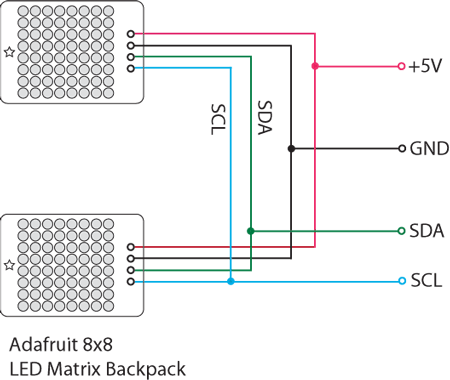Not Your Father’s LEDs
By Bryan Bergeron
In addition to SMT LEDs the size of a grain of sand, there are jumbo LEDs, super-bright compact LEDs, monochromatic LEDs in a variety of colors, and multicolor LEDs that can reproduce any color. Then, there are the monochromatic and color LED matrices. Some have onboard microcontrollers that support high level graphic and text libraries, much like LCD displays. Then there are the powerful LED laser diodes — often referred to as simply laser diodes — that produce monochromatic coherent light.
Based on activity in online forums, LED matrices are clearly generating the most buzz. My current favorite is the 1.2" 8x8 bicolor matrix with I2C backpack — that is, with onboard microcontroller — from Adafruit. At $16, the red/green LED matrix isn't cheap, considering an Arduino or Raspberry Pi sells for about $30. A less expensive option is a monochrome display ($10) which I've used, as well. If money is no object, Adafruit has a 1024 LED 32x32 color matrix panel ($120), but there's no onboard processor.
The smaller backpack-enabled LED matrices are a breeze to work with. There's no need to handle buffering, refresh rates, and relative PWM rates. As shown in the accompanying figure, all you need are power, ground, and two I2C leads from your microcontroller. The backpacks have address selection jumpers so that you can chain several matrices such as I did in the graphic. Most importantly, Adafruit offers an Arduino library that works across the monochrome and color 8x8 matrices.
Although I haven't used it, there's an impressive RGB 8x8 color LED matrix available from Parallax ($40). Not surprisingly, its backpack is based on the powerful Propeller chip. Unlike the bicolor LED matrices from Adafruit, the more expensive Parallax display uses RGB LEDs; meaning it can display millions of different colors. Another big plus for the Parallax matrix is that only one I/O pin is required. Parallax supports the matrix with libraries for the Arduino, BASIC Stamp, and Propeller chip.
If you want to experiment with a bare LED matrix and you have a microcontroller to dedicate to the project, the most economical option is probably an 8x8 red LED matrix from Seeed Studio ($2.25). Their large 2.5" bicolor 8x8 color LED matrix is also a good deal ($5.50), but expect to spend a lot of time programming.
So, what's the value in an LED matrix? They make great alphanumeric displays, for one. I use them — together with proximity detection sensors — to simulate eye tracking in humanoid-looking robots. I'm sure you can think of additional uses — from a colorful time display, with, say, red digits for pm and green digits for am, to mood lighting. NV

Comments

